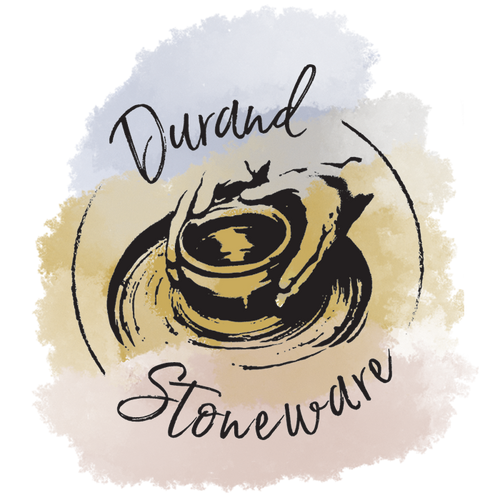The Making of Clay
Clay is formed by water, heat and pressure eroding away rocks. It is a natural product of the earth. The geological process of mountains and ridges being pushed up and formed and then being worn down again by weather creates clay. Clay can be found in the earth, soft and ready to be formed. Or it can be made up from the different raw, dry materials mixed with water. It can be modeled, pounded, flattened, rolled, pinched, coiled, pressed, thrown on a potters wheel,cast into molds, scored, stamped, extruded, cut or spun. These natural materials are not only used in pottery but also in the making of glass, brick, tile insulators and elements used in electronic devices, cements, plaster and lime. Clay is one of the only materials which doesn't have much value on it's own but can be made into valuable product.
"A Visit To The Clay Factory"
These images like all others on this site are copyrighted,
but may be used free of charge for educational purposes.
Jon and Judy hop on a plane to visit Walkers Ceramics in Victoria, where their clay is made.

David Walker met us on arrival. We arrived to find a busy workshop full of activity.

Edgar Walker started manufacturing clay in Mitcham Victoria in 1885, along with his sons and grandson, Geoffrey Walker. They ran a large tile producing plant and also supplied technical colleges with clay, glazes and ceramic materials. In 1955 Geoffrey and Constance Walker established "Walker Ceramics". Now David Walker has taken over from his parents, continuing the family tradition in clay that is still going strong 4 generations later. Ceramics is one of the first useful arts to be developed by man and it continues to be an essential part of our society. Walkers supplies hobby and commercial potteries as well as schools with clay, glazes, oxides and tools.
Let's start at the beginning of the process. Here are the large bays of raw materials, such as silica, alumina, feldspar, bentonite, etc. used to make the various clays. By adding different raw materials and in different ratios they are able to produce specifically designed clays for different uses. Some are designed for "throwing on a wheel", some for hand building, sculpting etc.

The raw materials are added together and then crushed and sifted.

The dry product is mixed with water and then filtered through screens to remove any unwanted objects.

The wet clay is pumped into large tanks to be mixed .

After the clay is thoroughly mixed it is pumped from the large blue tanks into the filter presses seen on the right of the picture.

This is the pump which delivers the clay to the press. It also removes any unwanted metals by utilising a large magnet.

The filter press is a series of large canvas bags which are filled with the wet mix. The large metal ends tighten down to remove the excess water from the clay.

Here is David showing us how the filter press works. Next the large slabs of clay are removed from the press.

Slabs of clay sitting on pallets waiting to go through the pug.

Jon is looking at the large pugmill which de-airs and mixes the clay into an even consistent texture. Then extrudes the clay into continuous blocks and bagged.

David is bagging the finished product. (Rare photograph - not seen for years - David bagging a product !!!!!)

Here are the finished bags. After stacking them on a pallet they are loaded onto a truck to bring to our workshop in Beechmont.
Each of these blocks of clay weighs in at 10 kilos, so we use about one and a half blocks for what is our most popular product the 12 litre water filter systems.
